What is Minimally Invasive Surgery?
The words “minimally invasive” refer to minimizing the amount of tissue disruption that occurs in the process of gaining access to where the surgery is to be done. In other words, instead of making a large wound, the same or comparable surgery can be done through a smaller wound.
Technique differences: Open vs. Minimally Invasive
To operate with the open technique (shown here), much more dissection is needed to expose the bones and joints, with enough opening to accommodate the instruments and the surgeons hands as shown here. There is more retraction on the muscles, which have a tendency to resist and spring back towards the midline.
After a prolonged approach in this fashion, which is often needed, the muscles are bruised and sometimes don’t recover fully.
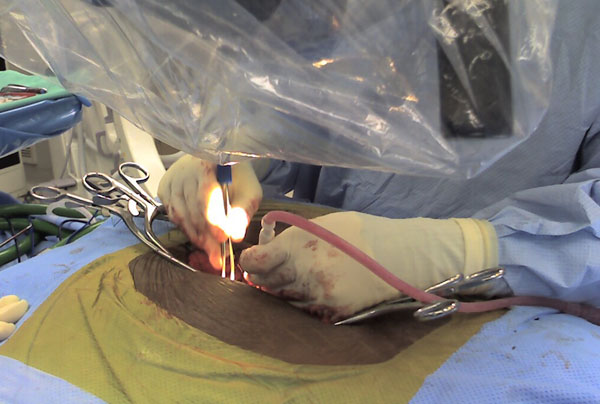
With a minimally invasive technique as shown below, there is less tissue dissection and retraction. This method is also very dependent on the excellent lighting and magnification provided by the operating microscope. With a minimally invasive technique, using a tubular retractor system, the tissues are spread instead of being detached, leaving more blood supply to the underlying tissues.
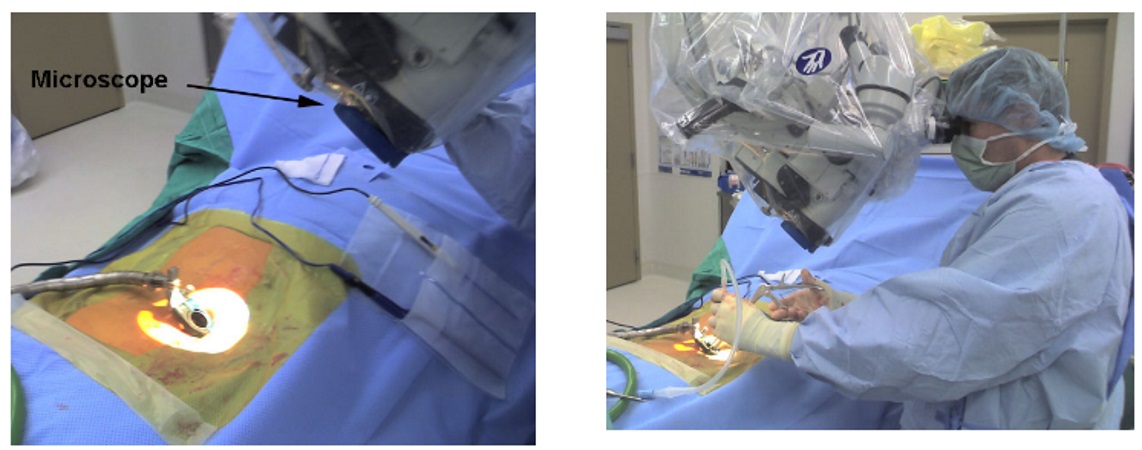
Open
Minimally Invasive
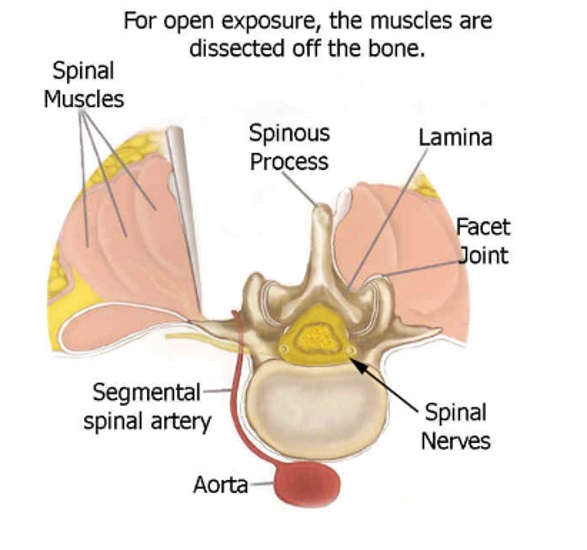
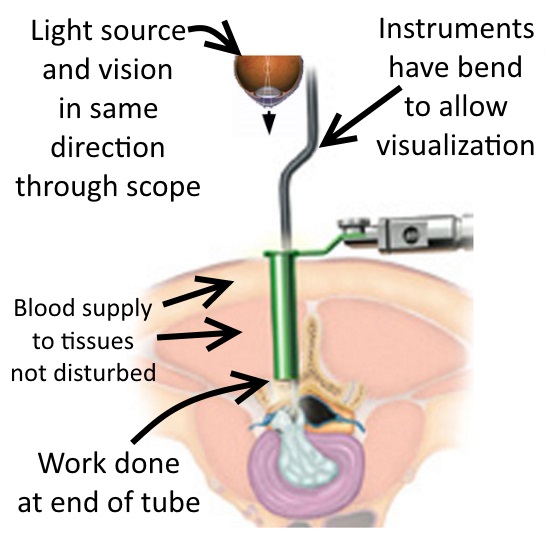
How can you see what you’re doing through that small opening?
By using the operating microscope, which provides excellent lighting and magnification, and instruments shaped like a bayonette (to keep the surgeon’s hand out of the way of thelight source and visualization), spinal surgery can be done through small incisions.
Are all procedures able to be done with a minimally invasive technique?
No. Certain procedures need to be done in an open fashion, like revision cases, and those where more access is needed.
Click here for more technique pictures showing how the tubes are placed.
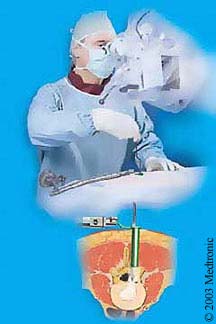
What are the advantages to a minimally invasive approach?
Very often, the advantages include:
–smaller scars
–better preservation of the blood supply to surrounding tissues (may help with quicker healing)
–shorter hospital stays
–reduced post operative pain.
Are there disadvantages to this technique?
The disadvantages, to be fair, include:
–there is a learning curve for the surgeon to be able to do this type of surgery (i.e., it takes several cases to become competent…for the record, I feel comfortable doing this type of surgery)
–some types of complications, like spinal fluid leak or vascular injury (both occur rarely) may require conversion to an open procedure.
Bottom line:
Each case is considered individually.
Minimally invasive techniques are tools to get the job done, and while it is the job of the surgeon to help the patient in as painless a way as possible, these techniques can lead to quicker recovery and less pain.
For further information, please refer to this article I have published online:
http://understandspinesurgery.com/article.asp?id=18
